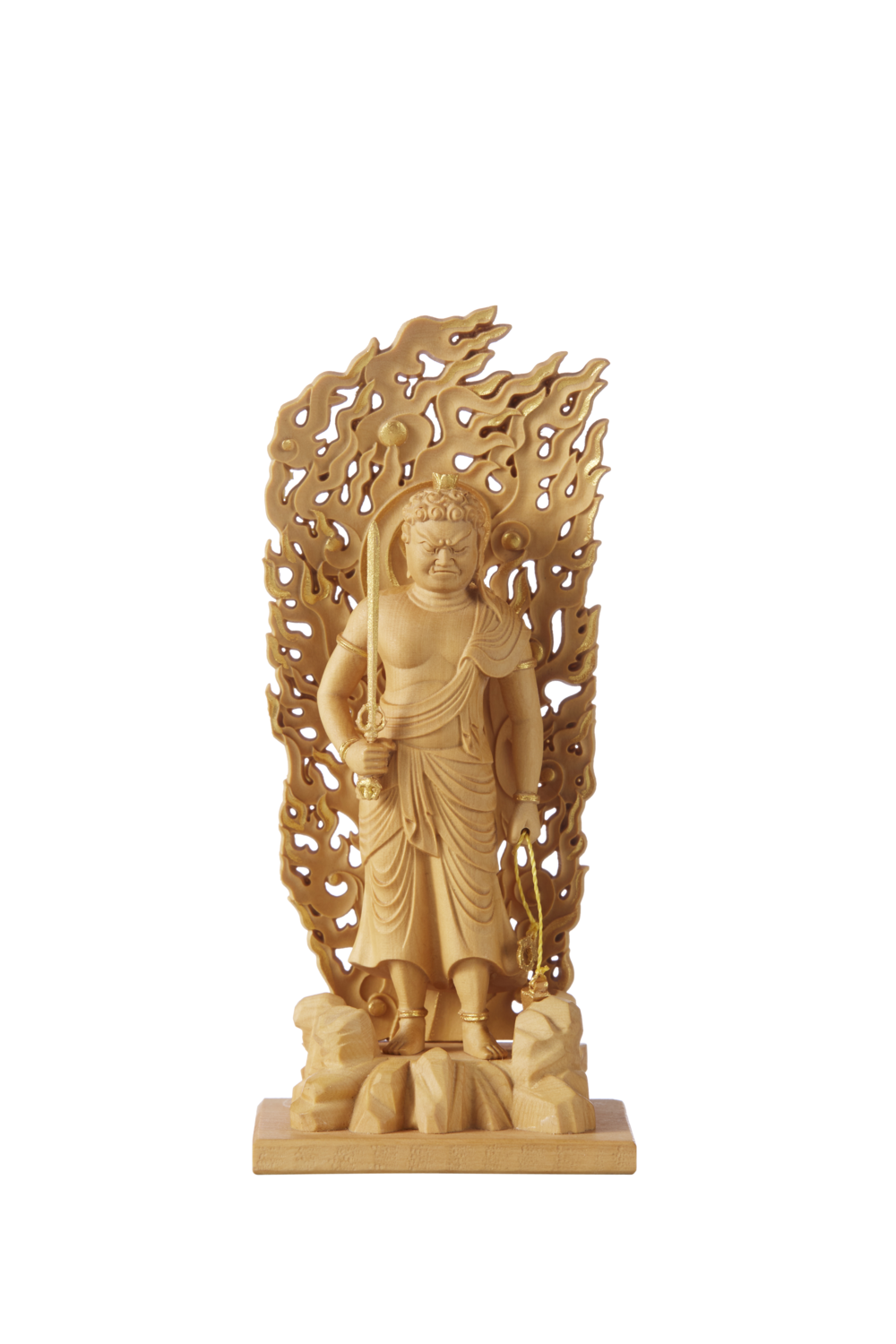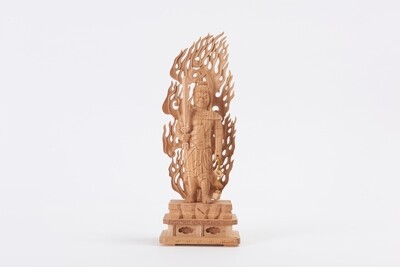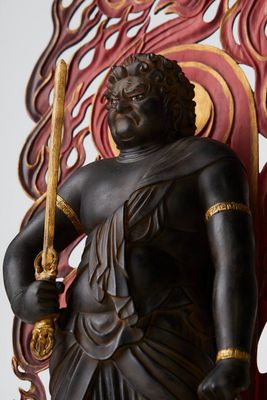Fudo Myoo (不動明王)
Fudo Myoo's right hand holds the Sankoken (三鈷剣), or the Kurikara Sword (倶利伽羅剣), a blade said to disperse evil and cut away peoples' worldly desires. In the left hand, it holds a snare which is said to be used to raise and rescue those who are bound up by their worldly desires. The Fudo Myoo has a fierce facial expression. Its names indicate its status as an unwavering guardian that make enemies yield. The anecdote that Shingen Takeda created the Takeda Fudoson as a Fudo Myoo modeled after himself is famous.
Fudo Myoo, originally based on the Buddhist guardian deity Akashobhya from India, has developed into a unique form in Japan. He is generally known as a symbol of anger and courage, often depicted in a wrathful posture. His name, "Fudo," means immovable or unchanging, symbolizing his resistance to being swayed by worldly desires and afflictions.
Fudo Myoo is revered in various sects of Japanese Esoteric Buddhism, such as Shingon Buddhism (真言宗), and particularly in Fudo Shu (不動宗), where a variety of Myoo (明王) and Bodhisattva (菩薩) are also venerated. Practitioners seek to overcome afflictions and obstacles, pursuing spiritual growth and liberation through the power of Fudo Myoo.
Typically depicted with an intense facial expression, Fudo Myoo stands against a background of flames. He often wields a sword (大刀) in his hand, symbolizing his ability to cut through evil forces. Due to his fierce appearance, worshipers turn to him to overcome fear and uncertainty, seeking to nurture courage and determination.
Devotion to Fudo Myoo involves seeking liberation from afflictions, protection from difficulties, and warding off negative karmic connections or disasters. Additionally, he is also revered as a guardian deity against epidemics and fires, with believers offering prayers to him during times of calamity.
In summary, Fudo Myoo holds a significant place in Japanese Buddhist faith as a symbol of anger and courage. He is revered as a guardian deity who provides spiritual strength and assistance to believers in facing afflictions and challenges. His worship is an integral part of Esoteric Buddhism, playing a crucial role in the pursuit of spiritual growth and liberation for many.
- Size: H11.5×W5×D3.5 (cm), 30g
- Material: Tsuge (柘植)
- Made in China
- You can choose the option to consecrate this statue (give an eye-opening ceremony) before it is shipped from Japan. If you choose this option, we will bring the statue to a Japanese temple, and pay them the necessary fees so that your statue is properly consecrated. The temple will issue a certificate of proof with your name on it, which will also be shipped together with your statue
- Shipped globally from Japan by using DHL. DHL is the world-class shipping services provider who makes international delivery a fast, smooth, and hassle-free experience. Delivery time can be faster than when shopping at an e-commerce website in your country, and of course your package will be covered by insurance. You can check the shipping cost for your entire order before you make a purchase


